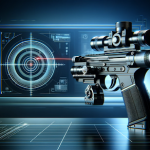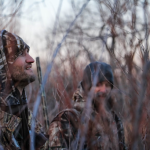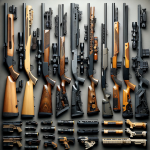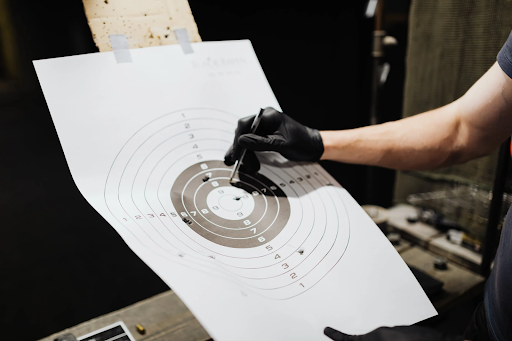
Whether you’re a relatively new shooter or a fixture at your local range, shooting competitions offer excellent opportunities to measure your marksmanship, improve your skills, meet other marksmen, and enjoy a friendly competition.
But how do target shooting competitions work? Which competition event might be right for you? In this guide, we’re exploring all things competition shooting, zooming in on three of the nation’s top competitive shooting formats.
You’ve come to the right place if you’re unsure where to start while navigating the wide world of competition shooting.
Olympic-Style Shooting Competitions
First, let’s start with the most traditional of firearms challenges: Olympic-style shooting competitions.
Many of today’s shooting competitions are inspired by Olympic matches in rules, target styles, and scoring. Here are some highlights:
- For rifle and pistol competitions, shooters fire at a 10-ring target. Each target is assigned a point value, and points are totaled based on how many rounds hit specific rings (but not all events count all of the rounds — more on this later). All rifle and pistol events are timed per Olympic regulations.
- There are two shotgun events in the Olympic games: trap and skeet. We’ll discuss these in more detail below, but both events require shooters to fire at moving clay targets, and points are amassed by hitting these.
- Today’s Olympic games have shooting events for both men and women. There are also three mixed-team events: 10mm air rifle, 10mm air pistol, and trap.
While many shooting competitions are modeled off Olympic events, winning a local Olympic-style event doesn’t necessarily constitute a formal entry into Olympic qualification.
Rifle Competitions
Prospective hunters or rifle enthusiasts may be most compatible with one of five Olympic-style rifle shooting events:
- Men’s/women’s 50-meter 3-position rifle – Shooters must fire a total of 40 shots from three positions: standing, kneeling, and prone (laying on your belly with your elbows resting on the ground). Shooters have two hours and 45 minutes to fire all of their rounds.
- Men’s/women’s 10-meter rifle – Each shooter fires a total of 60 shots within one hour and 15 minutes.
- Team 10-meter rifle – Teams are composed of one man and one woman, and each shooter must fire a total of 40 rounds in 50 minutes. Both shooters’ scores are totaled and combined.
Some variations of the above events use air rifles, while others use traditional firearms. Shooters’ weapons must also meet highly specific standards to qualify for use in an Olympic-style competition.
But, not all Olympic-style competitions will adhere to regulations as strictly as actual Olympic events. Before entering a competition, read the rules closely to make sure that you and your weapon are eligible.
Pistol Competitions
Olympic-style pistol competitions are similar to rifle matches: both event types use a ten-ring target to judge marksmanship and tally points.
There are three main categories of Olympic-style pistol events:
- 25-meter rapid-fire pistol – Rapid fire is traditionally a men’s-only event, but that could change in the future. During the event, shooters fire a total of 60 rounds in short bursts of four, six, and eight seconds.
- 25-meter pistol – The women’s counterpart to the rapid-fire pistol event, shooters must fire 60 rounds within a limited time.
- 10-meter air pistol – The 10-meter air pistol category features three events: a women’s event, a men’s event, and a mixed team event (each team features one man and one woman). Like the 10-meter rifle event, solo shooters fire 60 rounds within one hour and 15 minutes while teammates each shoot 40 rounds within 50 minutes.
If you’re interested in competitively pursuing Olympic-style pistol shooting, there’s one key element: Olympic pistol shooters may only hold their firearms with one hand.
Shotgun Competitions
There are a few distinct Olympic-style shotgun events, but they fall into one of two categories:
- Trap – Shooters fire at moving clay targets (sometimes called “clays” or “clay pigeons”) from five different positions. The clays mimic the trajectory of game birds, simulating wing shooting scenarios. The clays are thrown in front of the shooters instead of side-to-side. There are men’s, women’s, and mixed team events in trap.
- Skeet – Skeet is similar to trap: shooters fire at clay targets from eight different positions. Clay pigeons fly from left to right and vice versa (instead of away from the shooter, as they do in trap) from one of two towers (called “houses”).
Olympic shooters typically fire 12 gauge rounds in shotgun competitions, but rules may vary in more casual Olympic-style events. This is perhaps one of the most accessible shooting competition events available to everyday marksmen: skeet and trap ranges are abundant throughout the US, so ambitious shooters have plenty of opportunities to work on their skills in a local field.
United States Practical Shooting Association (USPSA) Competitions
Aside from Olympic-style competitions, shooters can participate nationwide in United States Practical Shooting Association (USPSA) matches.
There are a few things to note about USPSA events:
- They’re dynamic – There are USPSA-style events for nearly every firearm caliber, action, and type. Individual clubs, ranges, and organizers may design courses or ranges per USPSA guidelines and score them according to USPSA regulations.
- Shooters move – In most USPSA events, shooters must move between different targets and reload their weapons during the event’s time limits. Events are fast-paced and require dexterity, efficient movement, and situational awareness.
- Everyone is welcome – USPSA events are open to men, women, and children. Since USPSA uses a classification system, shooters compete against people with similar skill levels — so these competitions are very beginner-friendly.
Perhaps most importantly, USPSA emphasizes the value of practical shooting. In a hunting or self-defense scenario, you and your target may be moving — while targets don’t move during USPSA competitions, shooters must move between targets to complete courses. If you’re looking for a marksmanship test with a touch of athletic challenge, USPSA might be your competition style.
Civil Marksmanship Program (CMP) Competitions
Civil Marksmanship Program (CMP) competitions are an alternative to USPSA competitions.
The CMP is a civilian organization dedicated to shooting education, marksmanship training, and firearm safety — the organization is uniquely focused on educating the next generation of marksmen.
Their competition circuit features a wide variety of events, including:
- Air rifle and pistol competitions
- Rimfire sporter matches (which use .22 caliber rifles)
- As-issued military rifle courses
CMP events take place throughout the country, but their ranking system is unique. In League Matches, for instance, shooters can compete at their home range — but, their scores are ranked among shooters at other League Matches throughout the country.
CMP also offers training courses and clinics to help shooters improve their performance in competitions and general marksmanship. If you’re looking for an education-forward competitive opportunity, consider joining a CMP event in your area.
Join a Competition for a Marksmanship Challenge
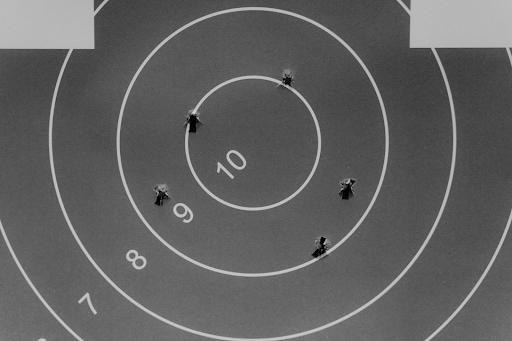
While you might think, “I’m not a skilled enough shooter to join a competition,” this isn’t always true. Many shooting competitions are open to new shooters, and they’re a great way to connect with your local shooting community, test your abilities in a standardized setting, and track your progress over time.
For new shooters and veterans, men and women, and shooters young and old, shooting competitions are a time-honored marksmanship tradition — consider signing up for an event to test your skills and enjoy time on the range.

